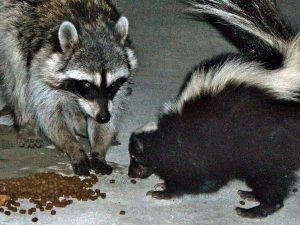 In 2016, 88 wild animals tested positive for rabies, with possible exposure to 100 pets, 116 livestock animals, and 32 humans, according to data from the Colorado Department of Public Health and Environment (CDPHE). Most rabies cases are found in bats and skunks; however, rabid foxes and raccoons have occasionally been reported.
In 2016, 88 wild animals tested positive for rabies, with possible exposure to 100 pets, 116 livestock animals, and 32 humans, according to data from the Colorado Department of Public Health and Environment (CDPHE). Most rabies cases are found in bats and skunks; however, rabid foxes and raccoons have occasionally been reported.
So how can you protect yourself and your domestic animals from rabies? Visit the CDPHE’s Rabies webpage for numerous resources, including brochures and fact sheets; rabies testing protocol; vaccination information; resources and precautions for veterinarians, animal control, and others who work with animals; and more. The Colorado Department of Agriculture has also published some rabies prevention tips.
Rabies data includes annual statistics back to 2012 as well as maps of occurrences. Many people think that rabies is more likely to be found in rural areas; these maps illustrate that this is not true — people in the metro area need to be aware of the risk of rabies. In 2015, for instance, most rabid bats were found in Denver, Arapahoe, and Larimer counties along the I-25 corridor.
Our library has many resources on rabies, including earlier years’ data, and several publications that can provide useful information on protecting yourself, your pets, and livestock. Selected publications include:
- Determining the Need for Rabies Post-Exposure Prophylaxis Following a Dog or Cat Bite in Colorado
- Rabies in Pets, Livestock and Wildlife
- Rabies Positive Animal Specimens by County, 1997-2006 and 1987-1996
- Skunks and Rabies
For more resources, visit our library’s online catalog.
- How to Spot the Differences Between Eagles and Hawks - August 16, 2021
- How Transportation Projects Help Tell the Story of Colorado’s Past - August 9, 2021
- Time Machine Tuesday: The Night the Castlewood Canyon Dam Gave Way - August 3, 2021
